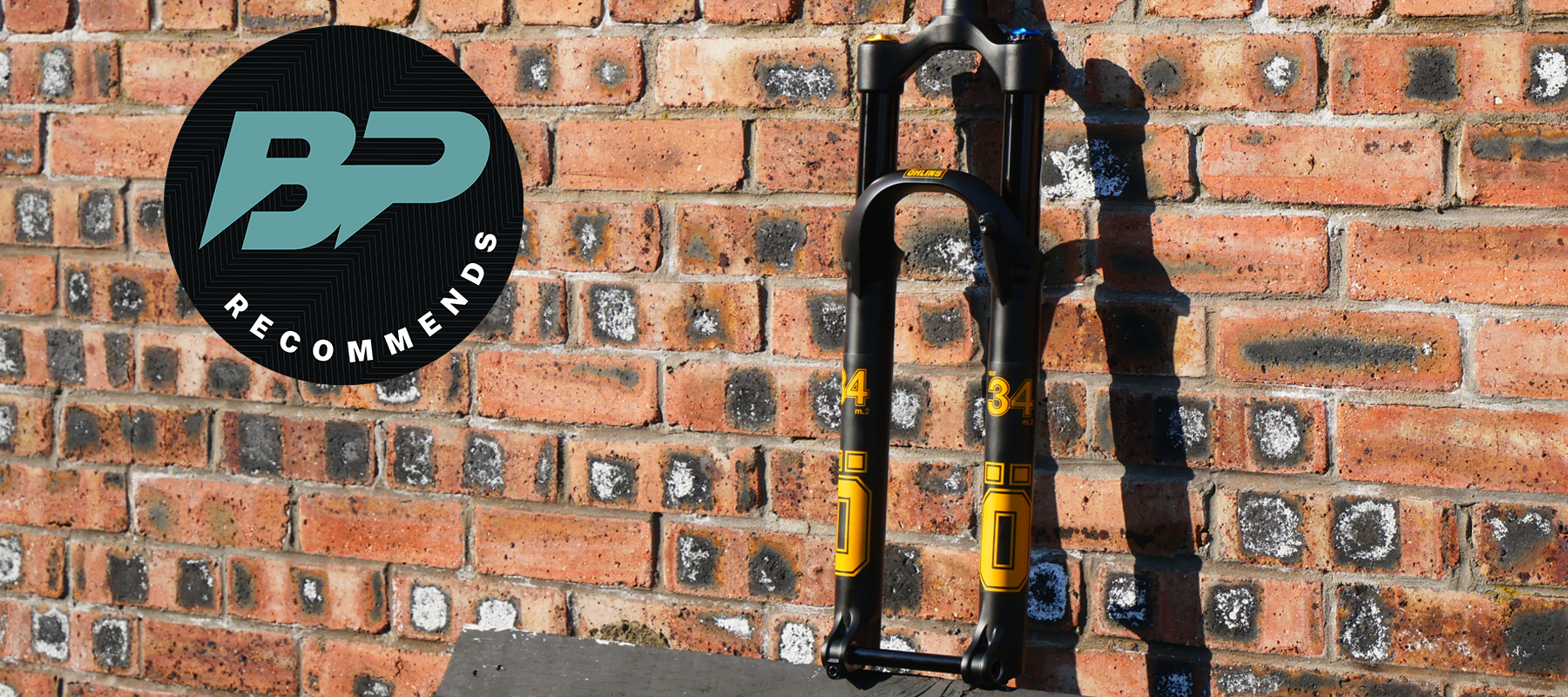Bike Perfect Verdict
Once setup for your riding style, the Ohlins RFX34 m.2 is an impressively capably downcountry fork that performs well across the diluted middle ground between cross-country and trail riding
Pros
- +
Linear stroke gives a good base for tuning
- +
Useful range of adjustments
- +
Very supple initial stroke enhances grip
- +
Stout enough to be ridden hard
Cons
- -
Expensive
- -
Questions on durability
- -
Some tuning is required to get the best performance, especially for aggressive riders
Why trust BikePerfect
Ohlins have released a brand new RXF34 m.2 downcountry/trail fork. The 34mm stanchion format is all-new and features evolved dampers, slimmed chassis and 120 or 130mm of travel.
Ohlins has been making a number of inroads into the gravity-orientated categories of the best mountain bike forks. The Swedish company, which comes from a background in motorsports, has managed to establish itself as a viable performance alternative to the mainstream Rockshox and Fox options that are more commonly seen.
With a focus on racing, Ohlins already caters for the downhill market with the DH38 m.1, most notably being ridden by the likes of Loic Bruni and Finn Iles on the Specialized Gravity team. The RXF38 m.2 and RXF36 m.2 forks cover enduro racing too, supporting a number of pro riders competing at the EWS.
Competition is a running theme with Ohlins focusing on delivering performance on the racecourse. Ohlins’ RXF34 m.2 is a downcountry bike fork that takes this race ethos and packages it into a short-travel trail fork format. The question is, does this focus on eking out valuable seconds translate when it's boiled down and applied to a smaller fork that's aimed around having fun on the trail, rather than feuding between the tape?
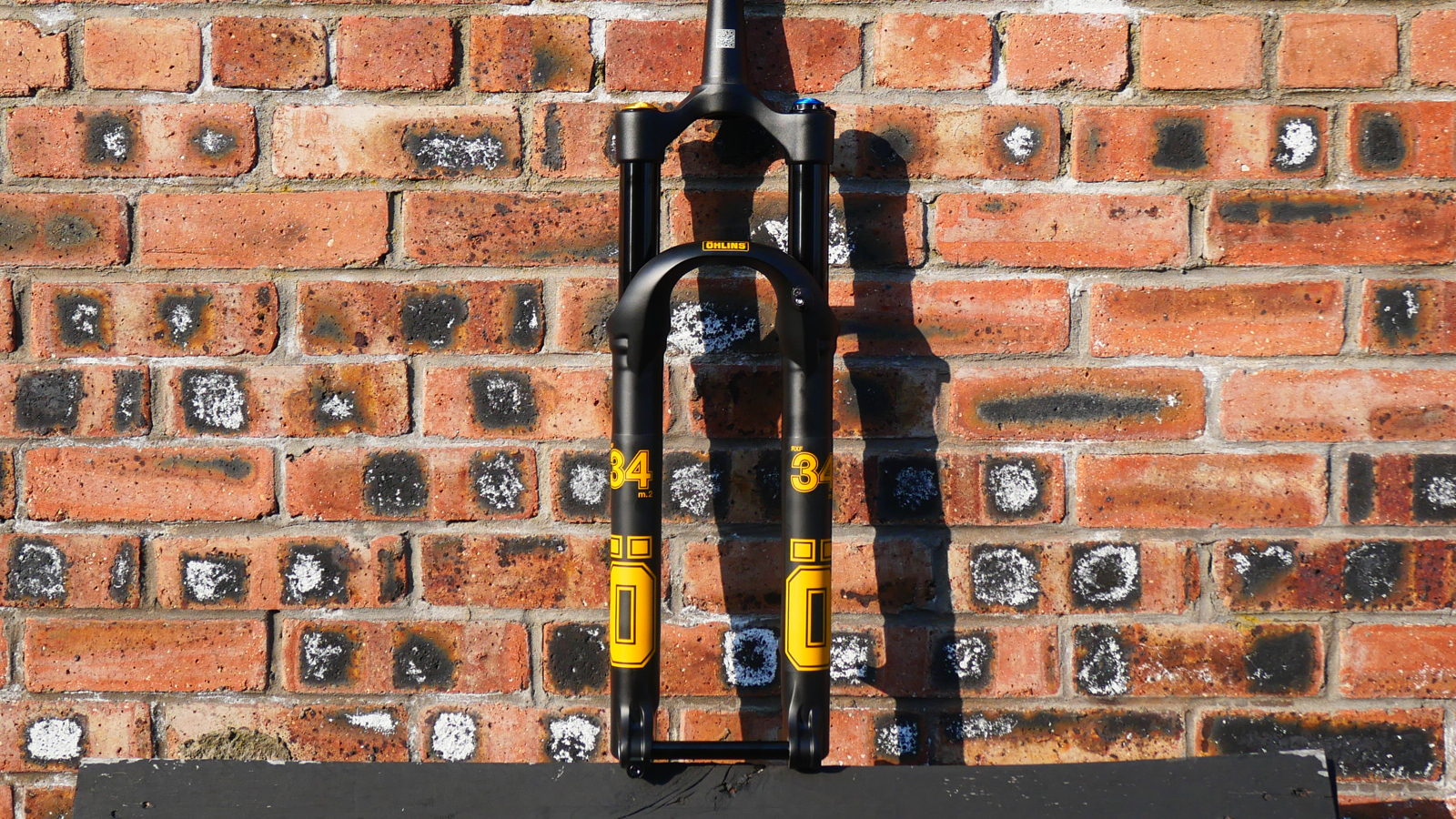

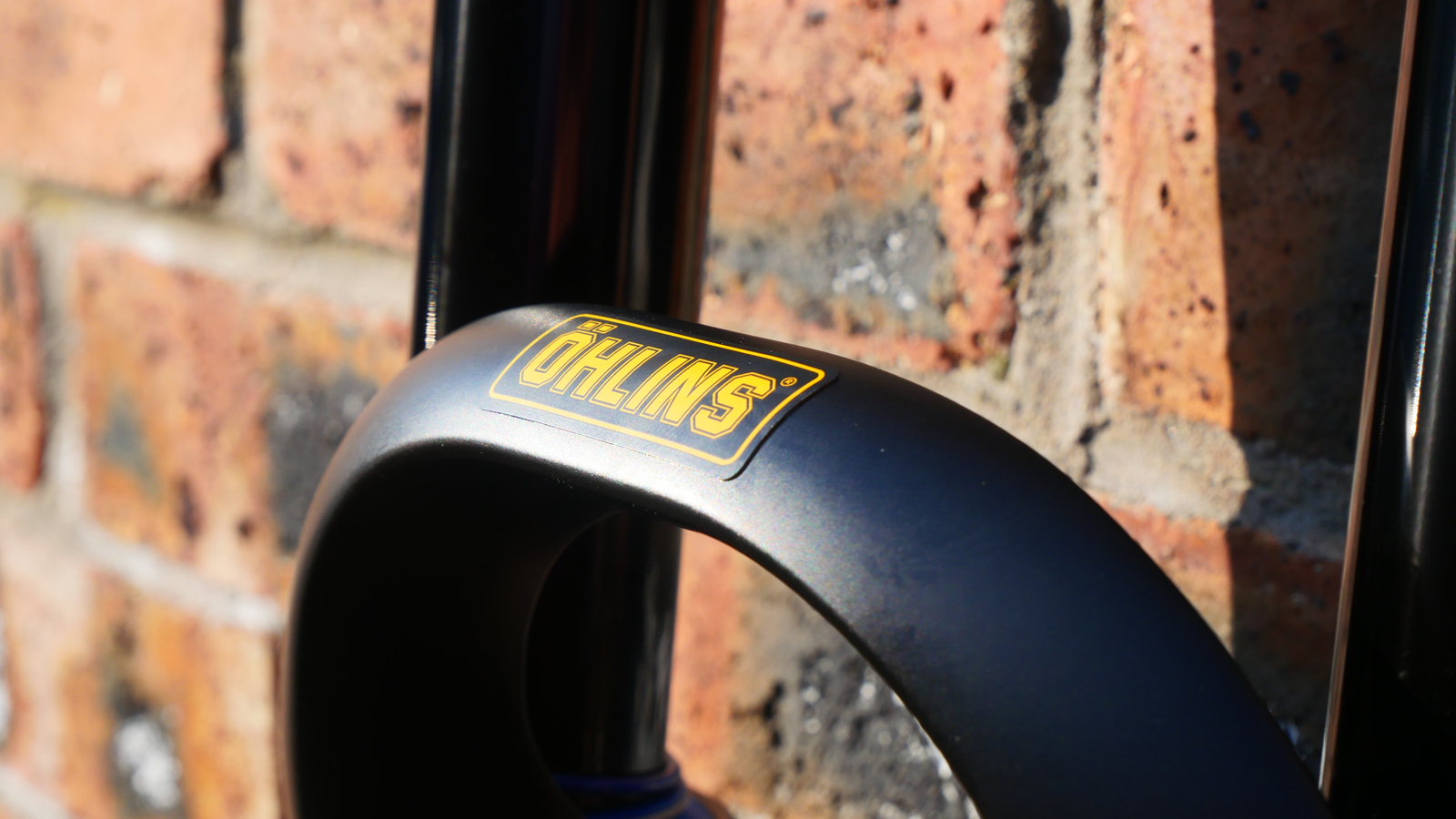

Design
Ohlins’ current smallest fork in the range is the 36mm tubed RXF36 m.2 which blends rowdy trail riding and enduro racing with its DH-evolved TTX18 damper. Equipped with 150mm to 170mm of travel, as per its use case, the RFX36 is a stout fork which has meant that Ohlins needed to take on a complete redesign in order for the RXF34 m.2 to meet the priorities of downcountry riding.
This isn’t Ohlins first 34mm fork but the RXF34 has a new downcountry-specific chassis. The result is a slimmed-down design that is built around a 34mm stanchion, a format that has proven to be an ideal blend of stoutness and low weight and is adopted by most other manufacturers in this genre.
Interestingly Ohlins are keen to emphasize the race-proven prowess of its design, despite the fact that downcountry mountain biking goes no further than hotly contested Strava segments in terms of competition. That said, knowledge of how different fork constructions handle the long and intense scenarios of downhill and enduro is undoubtedly going to be beneficial and should provide the groundwork to develop a downcountry fork that rides well.
Ohlins have designed the fork to have a Custom flex pattern, the theory is to offer a fork that is still direct and precise under steering input but not overly stiff so that it feels unforgiving. Ohlins says the compliance to take the edge off impacts that may not immediately translate to compression.
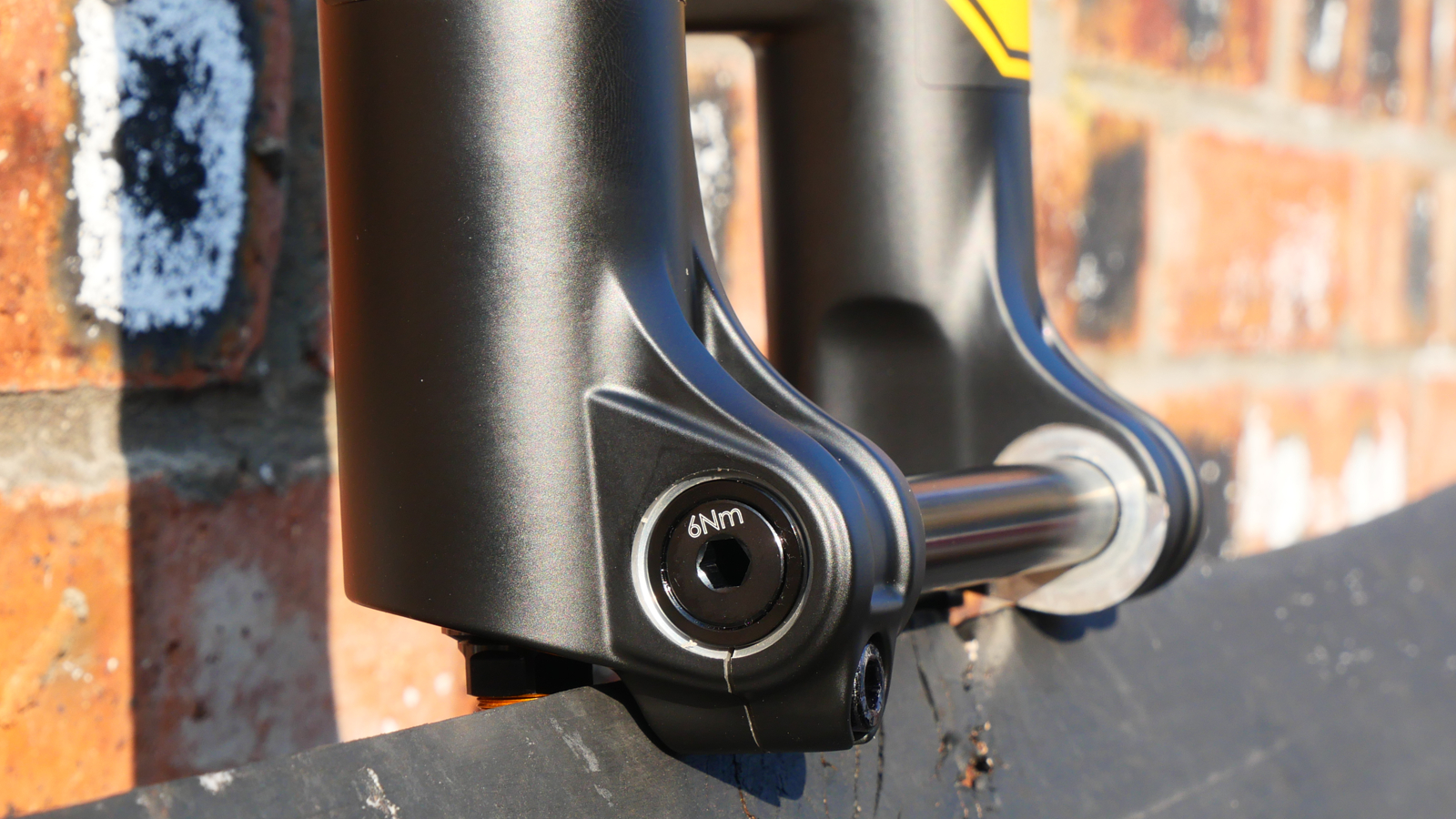

Ohlins uses a closed-end outer tube design which claims increased stiffness and impact resistance of the lowers. The 44mm offset drop-outs use Ohlins’ floating axle design, which has a pinch bolt on the right dropout to clamp the 15mm axle.
The legs are spread enough to clear a 2.6-inch tire and while most downcountry or light trail bikes can get away with a 180mm rotor up front, Ohlins says that the RXF34 can handle a 203mm rotor if you are looking to really drop the anchors - especially handy as the fork is rated for eMTB use too. Finally, there is a neat guide that bolts into the arch to hold your front brake hose.
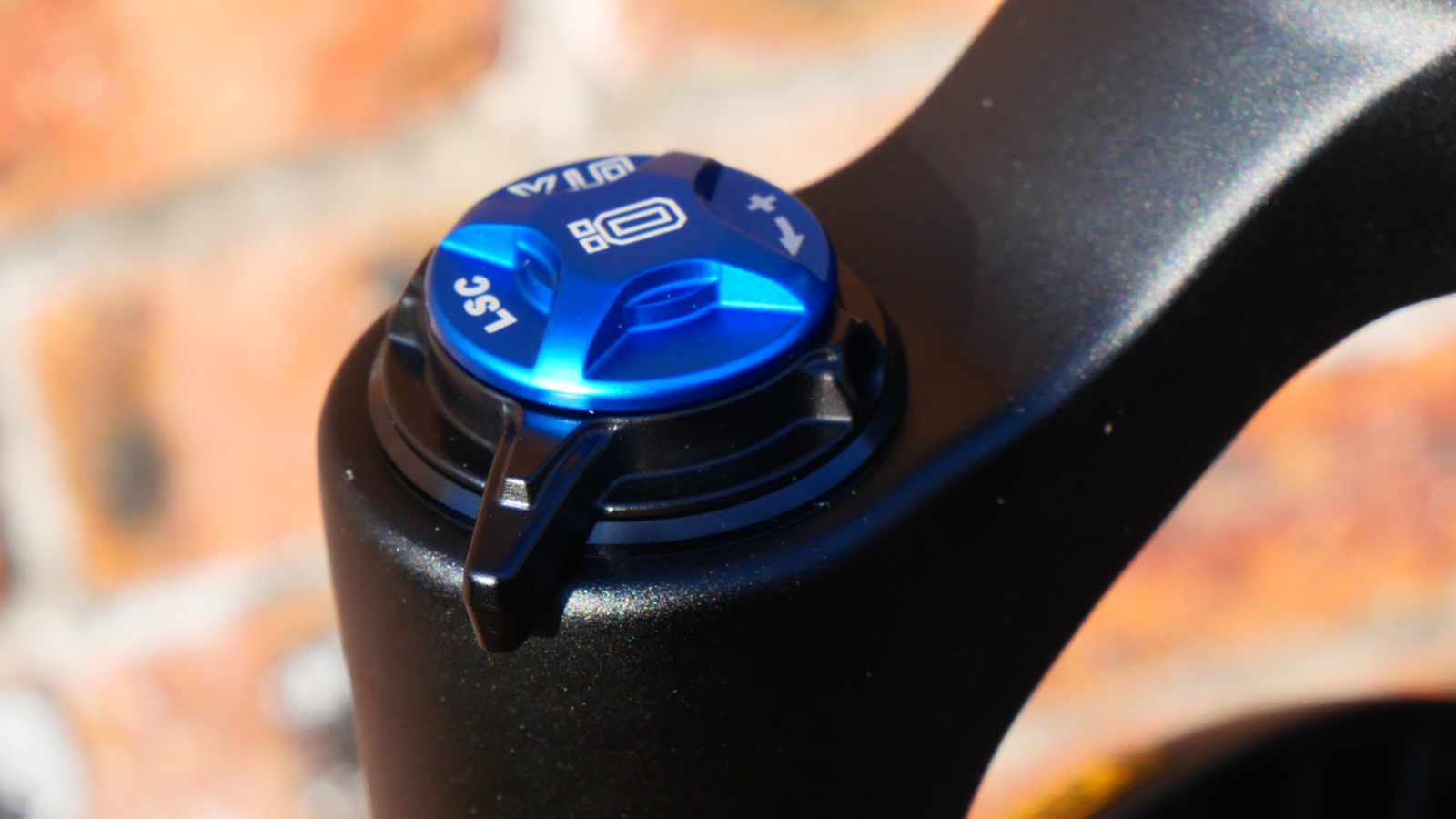

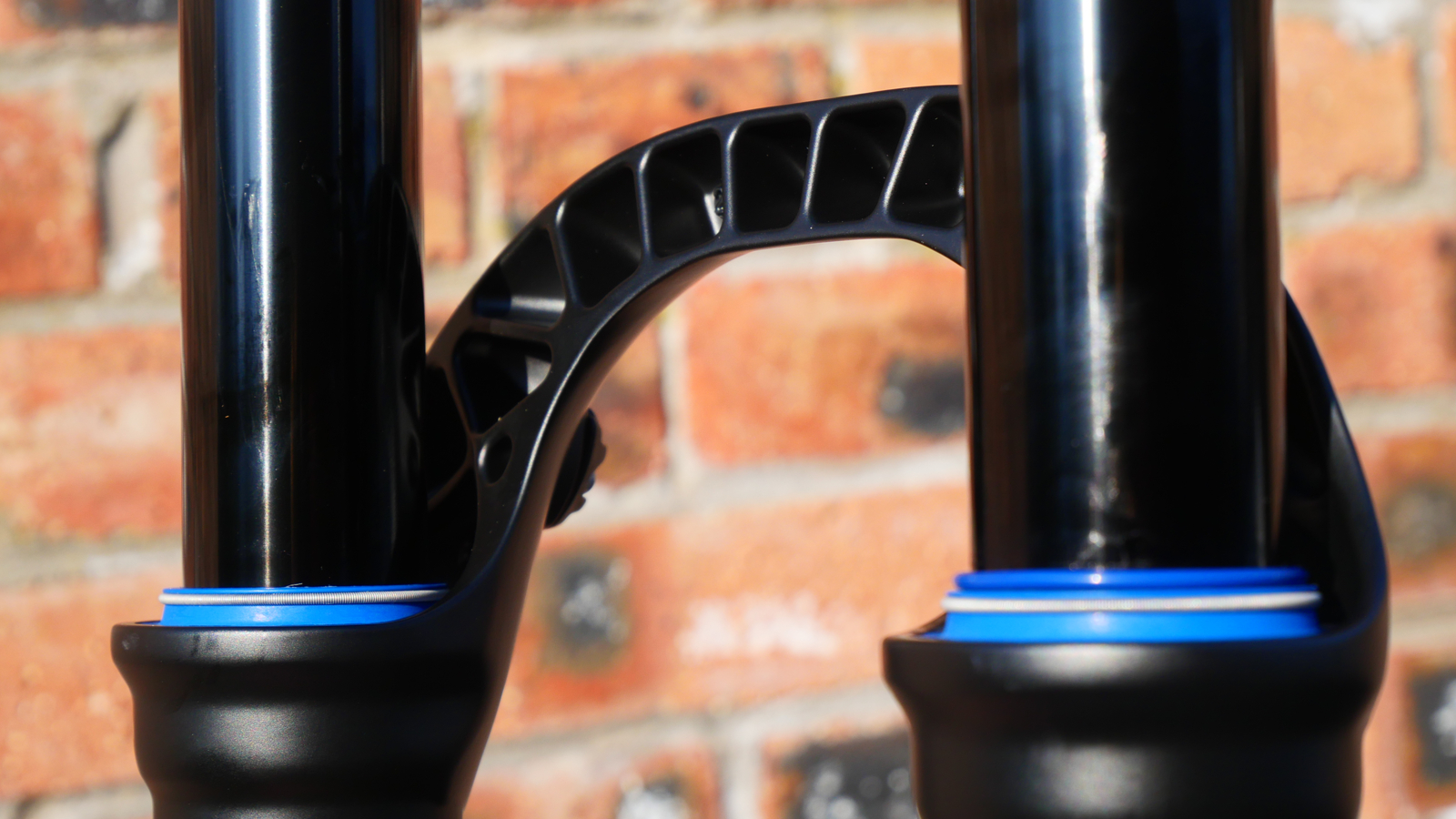
Adjustability
Inside the fork, Ohlins have specced a new OTX18 trail-optimized damper. Evolved from the TTX18 unit used in the more aggro forks, the OTX18 damper uses a single air chamber which not only makes it a claimed 27-percent light, but also increases sensitivity which should make it better suited to downcountry and the smaller, high-frequency impacts experienced.
The fork features a new air spring and a positive and self-adjusting negative chamber. The negative chamber handles the initial feel and superb small bump sensitivity whilst the positive chamber now features a spacer system to tune air volume, rather than the ramp-up chamber seen on the bigger forks.
The ability to change the positive air chamber means riders have greater control over how the fork feels. Reducing the air volume (adding more spacers) makes the fork more progressive, ramping up the spring force required to compress the fork as it moves through its travel. The 120mm fork ships with four spacers fitted and the 130mm come with three. Up to six spacers can be fitted to the 120mm and five in the 130mm, with the extra spacers included in the box. Adding spacers is a relatively pain-free process as it uses a cassette lockring tool to unscrew the top cap and access the spacer stack.
There is further adjustability with the RXF34 having 15 clicks of low-speed compression adjustment using the blue dial on the top of the left fork leg and 15 clicks of rebound adjustment via a gold adjuster on the bottom of the left fork leg. There are two high-speed compression damping settings as well as a third zero position for extended climbing. These are controlled by a lever under the low-speed compression knob on the top of the left leg.
Forks only work as well as they are maintained and as Ohlins have previously been very good at providing post-purchase support, we expect this to be the case with the RXF34 too. The RXF34 will also be included in Ohlins Setting bank to help you tune your fork based on you and your riding style.
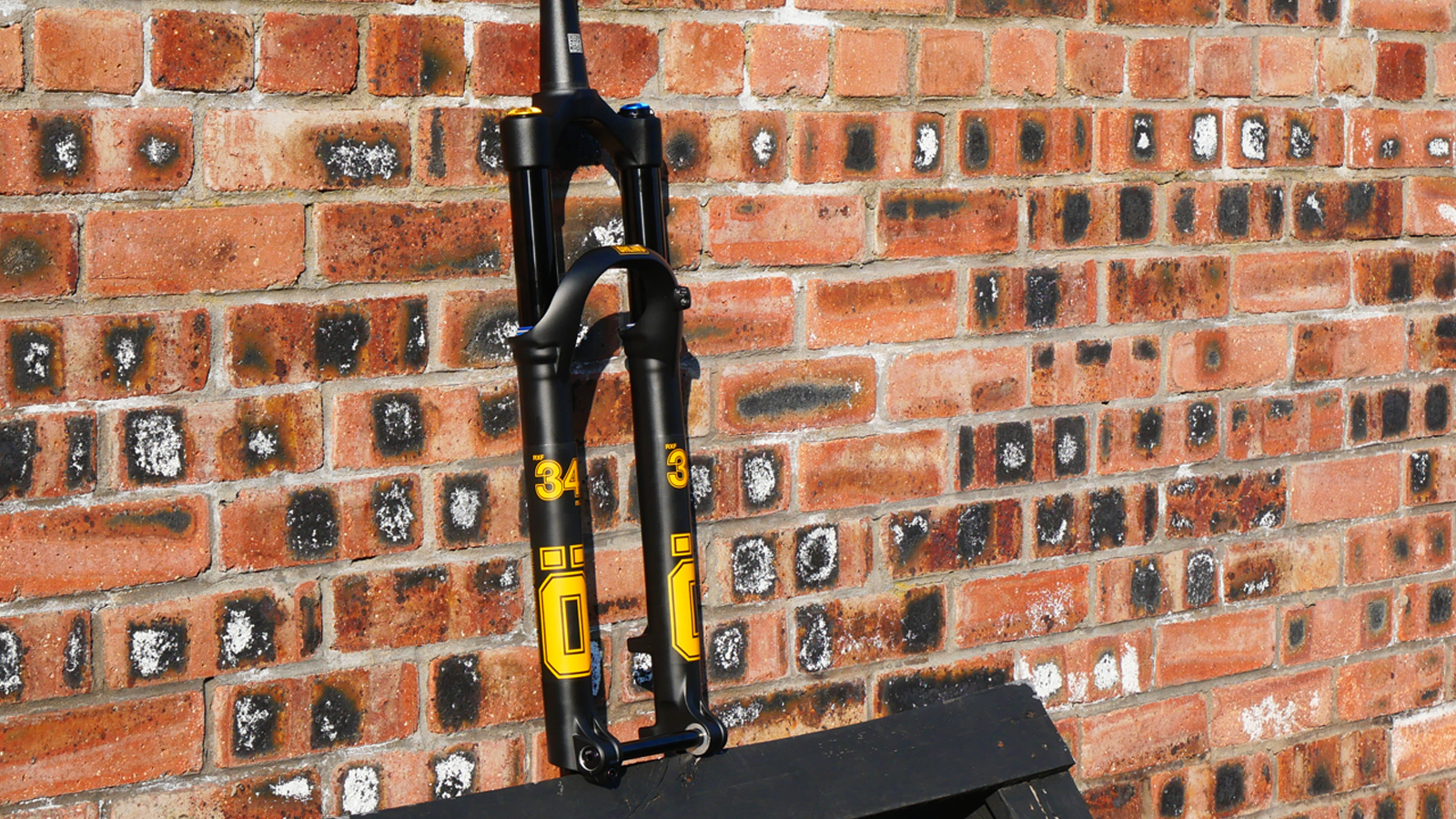
Performance
There's a decent range of adjustments from the 15 clicks of low speed, two high-speed settings, and the capacity to play with up to five-volume spacers. In our initial setup, we ran the three spacers fitted from the factory and set pressure based on the Ohlins Performance Suspension Guide website. The guide site only advises on pressure so we set the rebound to feel and opened all the compression setting up.
Despite the expected amount of sag, this setup was way too soft and would bottom out very easily as I found the stroke to be surprisingly linear, even with a ton of low-speed compression. For riders on mellower flow trails the linear feel gives a very buttery feel and a good baseline for experimenting with setup and fine-tuning small bump absorption. More aggressive riders will want to start dialing in a lot more progression though.
Initially, I experimented with a range of pressures starting at the recommended values for my 76kg ride weight before I worked on the low and high-speed compression and added volume spacers. While more pressure certainly helped it didn’t give me the desired results. Once I added an extra spacer (totaling four), dialed in seven-plus clicks of low-speed compressions, and reduced the pressures back to the recommended initial setting I found the RFX34 m.2 to maintain the small bump plushness yet had considerably more support, allowing the fork to be ridden a lot harder.

This gave the RFX34 m.2 a far more predictable feel, enhancing the cornering grip whilst resisting harder impacts. I experimented with the two high-speed compression settings although I didn’t notice much of a discernable difference between the two.
I attempted to push the fork beyond its remit a number of times and the 34mm chassis continually surprised me with its precision in corners and stoutness against square edges. I didn’t feel any instances of binding or stiction either despite charging through some really chunky root sections that could easily cause undesired flex in a less stiff fork.
I did experience a suck-down issue with our test sample fork which would cause it to pack down over the course of a ride. We suspect this was caused by an imbalance between the positive and negative chambers, however, we will continue to test the fork and report back if we experience any further issues.

Verdict
While the setup was initially a bit more involved than I have experienced from either Fox’s 34 or Rockshox’s Pike, once dialed in the RFX34 m.2 offered a great ride feel. If you are looking for a set-and-forget fork you may be better served by the aforementioned competitors although suspension tinkerers will appreciate the breadth of adjustments Ohlins offers.
The world of downcountry forks is a murky one though and it's not a clear-cut comparison between the main players. Arguably Fox’s 34 is a close comparison while the RFX34 m.2 falls in between RockShox’s cross-country focused SID and the beefier, thicker stanchioned Pike. Much of it depends on your interpretation of what downcountry is, personally, I think Ohlin’s has found a great balance in terms of stiffness, performance, and lightness.
Once I found the right combination of low-speed compression and added volume spacers, the RFX34 m.2 gives an excellent balance of control, initial suppleness, and bigger impact composure. If under-biking and short travel rowdiness is your thing the RFX34 m.2 can be ridden hard as well, plowing beyond its downcountry pay grade to hold its own alongside stouter long travel options. It's marginally lighter than the trail competition too which is great for trail riding gram counters, although it’s marginally heavier when it comes to the price too.
Tech specs: Ohlins RXF34 m.2
- Weight: 1,727g (130mm, including three volume spacers)
- Axle to crown: 531 (120mm stroke), 541mm (130mm stroke)
- Colors: Black
- Price: $1,180 / €1,294 / £1,185

Graham Cottingham joined the BikePerfect team as our senior tech writer in 2020. With over 20 years of riding experience, he has dabbled in downhill, enduro, and gravel racing. Not afraid of a challenge, Graham has embraced bikepacking over the last few years and likes nothing more than strapping some bags to his bike and covering big miles to explore Scotland's wildernesses. When he isn’t shredding the gnar in the Tweed Valley, sleeping in bushes, or tinkering with bikes, he is writing tech reviews for BikePerfect.
Rides: Cotic SolarisMax, Stooge MK4, 24 Bicycles Le Toy 3, Surly Steamroller
Height: 177cm
Weight: 71kg
